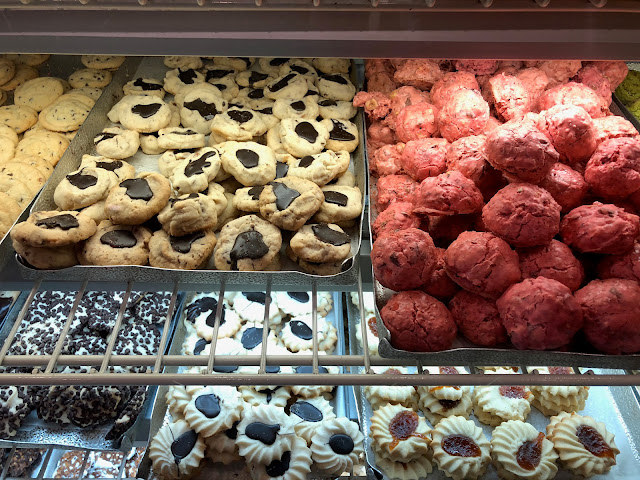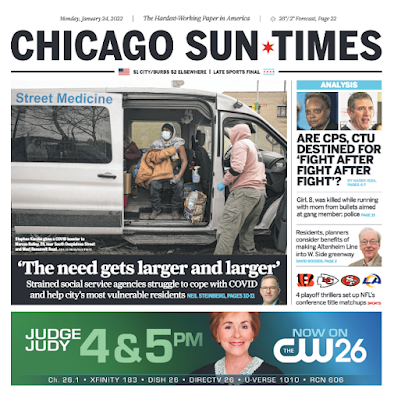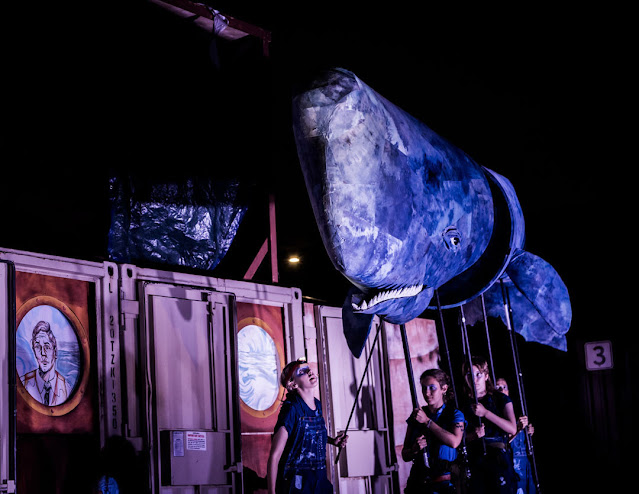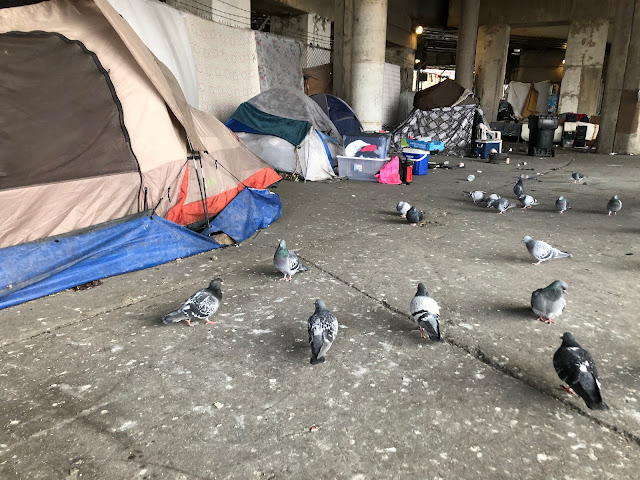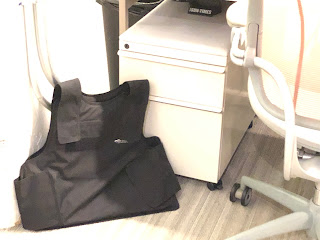There's a back story to today's headline. I recently read Ernest Hemingway's "For Whom the Bell Tolls," which contains my second favorite line from his work: "The world is a fine place and worth the fighting for." (Second to, from the end of "The Sun Also Rises": "Isn't it pretty to think so?") When I finished today's column, I originally thought to echo that with "Chicago is a fine place and worth the fighting for." But given the grim toll of gangs fighting over turf, I thought I'd better not, and give it the slight twist above.
One evening a few years ago I was walking in Harajuku, Tokyo’s trendy fashion district, when I noticed a bright neon sign: “CHICAGO.” I went in. There is joy in finding evidence of home when you’re far away, plus a special insider delight in noting what they get wrong, like those palm trees on the sign. Or the fact the store sells used kimonos.
So when an email from the mayor’s office hit my inbox, announcing the “Chicago Not Chicago” publicity initiative, highlighting Chicago’s global impact, I felt ready to play along. Not to snarkily tick off the many ways the world misinterprets Chicago. But to elaborate on Mayor Lori Lightfoot’s theme that “Chicago is truly a trailblazing city of firsts” that pulse out of our beating heartland and animate the world.
Where to begin? The city is right to stress architecture, one of Chicago’s most obvious global gifts to the world — Louis Sullivan, Frank Lloyd Wright, a parade of greatness right up to Jeanne Gang, who used to be described as a top female architect, and now is just a top architect. When Tom Cruise does his stunts on the Burj Khalifa, the tallest building in the world, in “Mission Impossible: Ghost Protocol,” that’s a designed-in-Chicago building he’s bouncing off of, created by Skidmore, Owings & Merrill’s Adrian Smith.
Next? Let’s pick music. The first composition considered to be jazz by musical scholars is Jelly Roll Morton’s “Jelly Roll Blues” published in Chicago in 1915; the New Orleans transplant so appreciated the welcome given him by Chicago, which he found not nearly as racist as St. Louis, he renamed the tune “The Chicago Blues.”
So when an email from the mayor’s office hit my inbox, announcing the “Chicago Not Chicago” publicity initiative, highlighting Chicago’s global impact, I felt ready to play along. Not to snarkily tick off the many ways the world misinterprets Chicago. But to elaborate on Mayor Lori Lightfoot’s theme that “Chicago is truly a trailblazing city of firsts” that pulse out of our beating heartland and animate the world.
Where to begin? The city is right to stress architecture, one of Chicago’s most obvious global gifts to the world — Louis Sullivan, Frank Lloyd Wright, a parade of greatness right up to Jeanne Gang, who used to be described as a top female architect, and now is just a top architect. When Tom Cruise does his stunts on the Burj Khalifa, the tallest building in the world, in “Mission Impossible: Ghost Protocol,” that’s a designed-in-Chicago building he’s bouncing off of, created by Skidmore, Owings & Merrill’s Adrian Smith.
Next? Let’s pick music. The first composition considered to be jazz by musical scholars is Jelly Roll Morton’s “Jelly Roll Blues” published in Chicago in 1915; the New Orleans transplant so appreciated the welcome given him by Chicago, which he found not nearly as racist as St. Louis, he renamed the tune “The Chicago Blues.”
Chicago drew the greats to itself. From Louis Armstrong to Willie Dixon, a house musician at Chess Records, who in one three day stretch played bass on both Muddy Waters' "Mannish Boy" and Chuck Berry's "Maybelline." (Which is not even. the most significant product called "Maybelline" to come out of our city. That would be the cosmetic Thomas Lyle Williams created after watching his sister Mabel highlight her eyes with a concoction of coal dust and Vaseline during World War I).
I could fill three columns with ways Chicago music rocked the world. The Rolling Stones are one of many bands sprung root and branch from the Chicago sound. Their name, remember, is based on a lyric from a Muddy Waters song, and they came to Chess in 1964 to record his “I Can’t Be Satisfied,” which a year later they reinvented as “(I Can’t Get No) Satisfaction.”
The mayor mentioned cell phones, debuted in the parking lot of Soldier Field. Don’t forget the first controlled, self-sustaining nuclear reaction was achieved at the University of Chicago, which also discovered REM sleep while inventing sleep research. Videotape debuted here. And loudspeakers. And shortwave radio.
I could fill three columns with ways Chicago music rocked the world. The Rolling Stones are one of many bands sprung root and branch from the Chicago sound. Their name, remember, is based on a lyric from a Muddy Waters song, and they came to Chess in 1964 to record his “I Can’t Be Satisfied,” which a year later they reinvented as “(I Can’t Get No) Satisfaction.”
The mayor mentioned cell phones, debuted in the parking lot of Soldier Field. Don’t forget the first controlled, self-sustaining nuclear reaction was achieved at the University of Chicago, which also discovered REM sleep while inventing sleep research. Videotape debuted here. And loudspeakers. And shortwave radio.
The most iconic piece of technology to come out of Chicago has to be Shure’s Unidyne Model 55 microphone, its distinctive look inspired by the grill of a 1937 Oldsmobile, a rare piece of electronics almost unchanged for 80 years. To convey that a person in a picture is singing, and not just standing there with their mouth open, a Model 55 microphone is the go-to prop.
To continue reading, click here.






